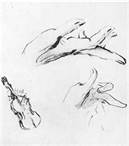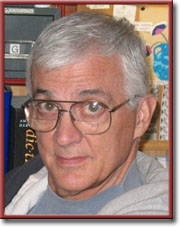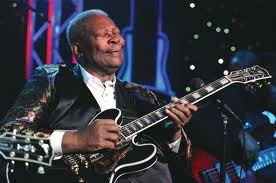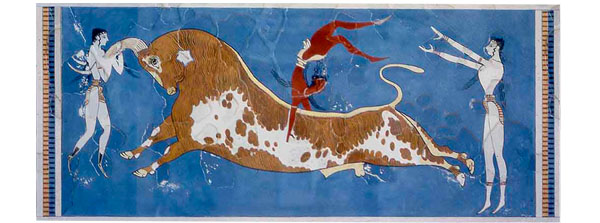Waltzing to the Second Fiddle: Music
“I have occasionally purchased a CD after hearing a live performance only to be disappointed when I listened at home. There’s something about putting a face with a flamenco guitar or steel-drum set; I hear the music through my eyes.” Skip Eisiminger
Skip the B.S.
by Skip Eisiminger
“A chord in a minor key is universally anxious.”—The Wordspinner
“The Met banned Wagner in the Great War, and the Germans banned Mendelsohn in the Greater War.”—The Wordspinner

 CLEMSON South Carolina—(Weekly Hubris)—11/1/12—Let’s face it, if my wife were singing in the shower, I would not put my ear to the keyhole. Not that she can’t carry a tune, I’m just more visually than aurally stimulated. Forty years after finishing Art History 301 with a 104 average, I can still tell you which side of the page Monet’s Water Lilies is on in Helen Gardner’s text. I never forgave Gardner for raving about the luscious variety of Monet’s palette when all she had provided was a black-and-white reproduction. Later, as an interdisciplinary Humanities teacher, I was always sympathetic to students who wrote on their exams, “I don’t know, but it’s in the upper left-hand corner on the last page of the chapter.” If they were correct, I gave them partial credit.
CLEMSON South Carolina—(Weekly Hubris)—11/1/12—Let’s face it, if my wife were singing in the shower, I would not put my ear to the keyhole. Not that she can’t carry a tune, I’m just more visually than aurally stimulated. Forty years after finishing Art History 301 with a 104 average, I can still tell you which side of the page Monet’s Water Lilies is on in Helen Gardner’s text. I never forgave Gardner for raving about the luscious variety of Monet’s palette when all she had provided was a black-and-white reproduction. Later, as an interdisciplinary Humanities teacher, I was always sympathetic to students who wrote on their exams, “I don’t know, but it’s in the upper left-hand corner on the last page of the chapter.” If they were correct, I gave them partial credit.
Music has played second fiddle in my sensory orchestra ever since I mastered the “air violin” in the sixth-grade music class that my mother insisted I take. When the teacher told the string section that Paganini had an eighteen-inch hand span when mine was less than seven, I figured I didn’t stand a chance. When I fell in love with Martin Denny’s “Quiet Village” a few years later, I tried teaching myself to play the bongos (http://www.youtube.com/watch?v=OJK2LwD_nEY). For authenticity, I figured my practice time had to be after dark in the back yard with live crickets, but the neighbors put the kibosh on that career move. The upshot was I never learned if either instrument could coax milk from a woman’s breast.
With a mother who loved Eddie Arnold and a father who loved Mantovani, what saved me for serious music was a nameless librarian at Ft. Hamilton, New York who took me and several others in the seventh grade to a production of Madama Butterfly at the old Met. Perhaps it was the onset of adolescence, not Puccini’s soaring melodies but, by Act III, I felt I could fly from the balcony to crush Pinkerton and sweep Butterfly up in my skinny arms.
As a junior in high school, I heard a Dixieland band perform in a monthly “assembly.” As soon as I had my driver’s license, I went down to the club under the Key Street Bridge in Washington to hear the band again. One hearing of a musical genre was often enough to make me a fan for life. In the army, a friend took me to Greenwich Village to hear some folk singer with a battered acoustic guitar, and that’s all it took to put the hammer of justice in my hand and set some utopian schemes “a-blowin’” in my head.

Being the videophile I am, my conversion (if there was one) usually required an initial live performance. In other words, I had to see the performer in action; an audio recording was not enough. In the 1980s, I remember friends raving about the blues, and I did listen to some, but I didn’t become a fan until a few years later when I saw B.B. King throw his red pick to an audience in Greenville. I can still kick myself because less than a mile from where we have lived for over 40 years stood Littlejohn’s Grill, featuring some of the best blues acts in the country. I never went.
I have no idea how many others there are like me, but I have often wondered why music DVDs have not taken over the CD market. Imagine if instead of listening to Little Richard as I did in the 1950s, I could have watched him and his band play any time I wanted (http://www.youtube.com/watch?v=QFq5O2kabQo). For me, an audio recording is dishwater compared to the video. I have occasionally purchased a CD after hearing a live performance only to be disappointed when I listened at home. There’s something about putting a face with a flamenco guitar or steel-drum set; I hear the music through my eyes.
Hard as I tried to stay up with the latest music, the hits seemed to stop about 1980 when I turned 40. I was browsing through my journal recently and found the following entry: “Oct. 12, 1985—I picked up the latest Tiger [the school paper] and scanned the top-ten list on a ride to the eighth floor. I did not recognize a single title! How sad!” Our children and my students did their best to keep me in the loop, but I knew it was hopeless when I publicly surmised that “Nights in White Satin” dealt with the KKK (http://www.youtube.com/watch?v=4lazdg-eqmQ).
Though I never mastered the violin or the bongos, I did eventually “conduct.” In my Introduction to the Western Humanities course, I asked half the class to sing “Happy Birthday,” a few volunteers to hum the harmony above or below the melodic line, and the rest to provide the rhythm by clapping. I conducted with a laser pointer aimed at the ceiling. By the second semester, I was playing Chopin, Beethoven, and Strauss while flashing Delacroix, Constable, and Turner on the screen. A few weeks later, the class was ready for “La Bohème” and “Swan Lake.” For most of them, this was the first opera or ballet they had ever seen or heard.
The largest debt, however, I owe to music is the color blinders it placed on this Southern White boy growing up with Jim Crow sitting at the supper table. It’s true I had some advantages maturing on and around integrated army bases, but whether it was Elvis singing black gospel tunes, or Fats Domino playing for White and Black teens in Philadelphia, or Black bassist Eugene Wright laying down the law for Dave Brubeck’s piano, music didn’t give a damn about the color of anyone’s skin (http://en.wikipedia.org/wiki/Eugene_Wright). For a kid in Columbus, Georgia in the 1950s, this was a positively unsettling message.
When Edison among others introduced the concept of recorded music, John Philip Sousa thought that sound captured on tin foil and wax would be the mummification of live performances. However, given the dearth of parades led by a wheeled phonograph, Sousa’s fears were surely unfounded. As for iPods’ sealing the conduit of new performers, to date in this family of music listeners, we have a pianist-trombonist, a guitarist-vocalist, and a cellist. If a child really wants to play, he or she will find a way.
As long as a fetus will turn its head to listen to Mozart, music has little to fear from modern technology. That’s not to say the machines won’t change; it just means the music will endure in a variety of mediums. In Mozart’s lifetime, no more than a few thousand aristocrats heard the maestro’s work. Today, billions across the social spectrum and the globe can afford to listen, and they do, and they will.
